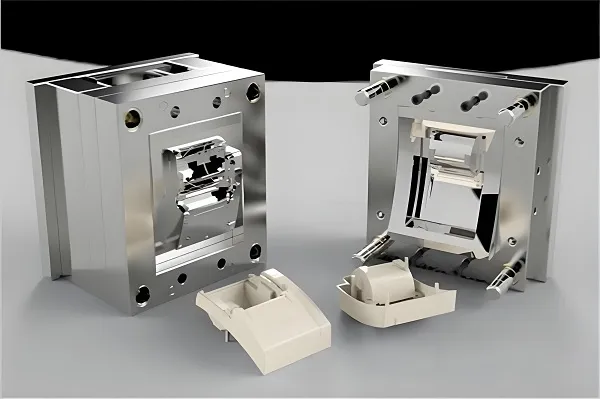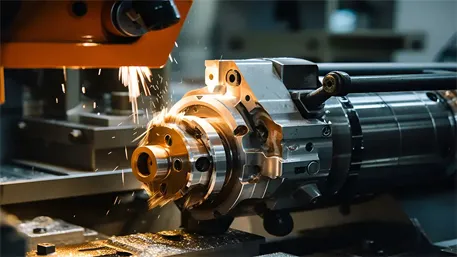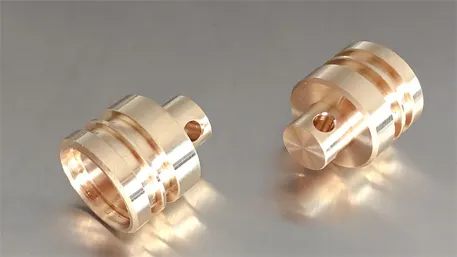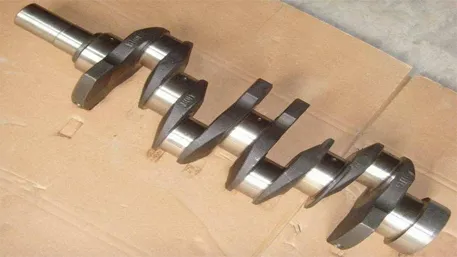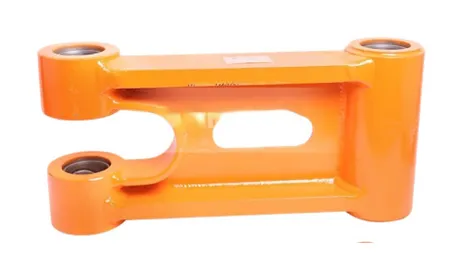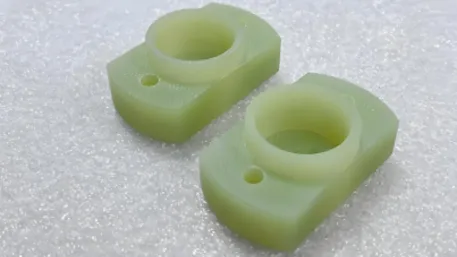In the dynamic world of manufacturing, custom CNC brass parts have carved out a significant niche, thanks to the material’s unique properties and the precision of CNC (Computer Numerical Control) machining. Combining the excellent conductivity, corrosion resistance, and malleability of brass with the high – accuracy capabilities of CNC technology, these parts offer reliable performance across a wide range of industries. This article explores the technical capabilities, customization process, material selection, quality control, and industry applications of custom CNC brass parts, highlighting their importance in modern manufacturing.
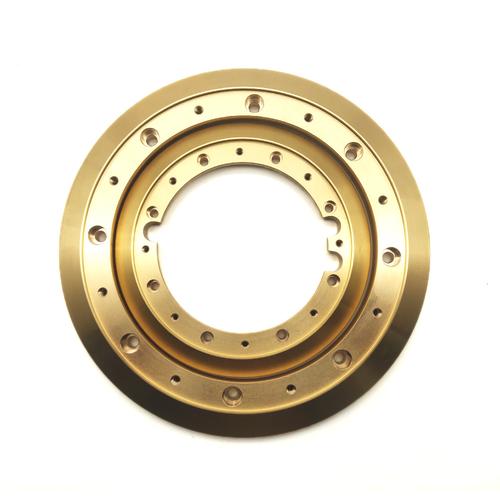
I. Technical Capabilities: Precision at Its Core
(A) Exceptional Dimensional Accuracy
CNC machining systems are calibrated to achieve outstanding dimensional accuracy in the production of brass parts. With positioning accuracy reaching ±0.003mm and repeat positioning accuracy of ±0.005mm, we can fabricate parts with extremely tight tolerances. For instance, when manufacturing small – scale electrical connectors, the dimensions of the pins and sockets can be maintained within these precise limits. This level of accuracy ensures a perfect fit, minimizing electrical resistance and enhancing the overall functionality of the final product.
(B) Complex Geometry Machining
Five – axis CNC machining technology enables the creation of brass parts with complex geometries. Whether it’s parts with intricate internal channels for fluid flow, decorative components with elaborate patterns, or parts with multi – angled surfaces for specific mechanical functions, the five – axis system can execute these designs with precision. Compared to traditional machining methods, five – axis CNC machining reduces setup – related errors from ±0.015mm to within ±0.005mm. Moreover, it boosts production efficiency by over 50%, allowing for the rapid manufacturing of custom brass parts, even with the most challenging designs.
(C) Optimized Machining for Brass
Brass, while relatively easy to machine, still requires specific techniques to achieve the best results. CNC – controlled machining parameters, such as cutting speeds, feed rates, and tool selection, are optimized for brass. Specialized cutting tools with appropriate coatings are used to reduce friction and prevent tool wear, ensuring a smooth surface finish. Additionally, CNC – guided processes can be used to enhance the surface quality further, such as CNC – controlled polishing for parts that require a high – luster finish.
II. End – to – End Customization: Tailored to Your Needs
(A) In – Depth Requirement Analysis and Design Conceptualization
When you approach us with your brass part requirements, our experienced engineering team engages in detailed discussions to understand your application, performance expectations, and design preferences. We consider factors such as the intended use of the part (electrical, mechanical, decorative), operating environment (humidity, temperature, corrosive conditions), and any specific functional or aesthetic requirements. Using state – of – the – art CAD/CAM software, we generate multiple design concepts. We then collaborate closely with you, refining the designs until they perfectly align with your vision, whether it’s a minor modification to a standard part or a completely new design for a specialized project.
(B) Strategic Material Selection and Cost Analysis
Based on the finalized design, we recommend the most suitable brass alloys for your custom parts. Different brass alloys offer varying combinations of properties. For example, C26000 (cartridge brass) is widely used due to its excellent formability, good strength, and corrosion resistance. It has a tensile strength of up to 440 MPa and is commonly used in applications such as plumbing fittings, musical instruments, and decorative items. For applications that require higher strength and wear resistance, alloys like C36000 (free – machining brass) can be selected. Simultaneously, we conduct a detailed cost analysis, factoring in material costs, machining complexity, and production volume, to provide you with a transparent and competitive quote.
(C) Precision Manufacturing and Order Tracking
Once you approve the design and quote, production commences. You can monitor the progress of your order in real – time through our dedicated online tracking platform. Our skilled technicians adhere to strict manufacturing standards, using advanced CNC turning, milling, and drilling machines to produce brass parts that meet the highest quality benchmarks. We keep you informed at every stage of the production process, from raw material procurement to the final inspection.
(D) Rigorous Quality Assurance and Timely Delivery
After production, each custom brass part undergoes a rigorous quality inspection. Only parts that meet our exacting standards are shipped to you. We perform dimensional inspections using coordinate measuring machines (CMMs) to ensure that all critical dimensions are within ±0.003mm. Surface finish measurements are taken to ensure that the surface meets the required roughness specifications for optimal functionality and aesthetics. In addition, we conduct mechanical tests, such as hardness testing and tensile strength testing, to validate the performance of the parts. We also offer comprehensive after – sales support, addressing any concerns you may have during the product’s lifecycle.
III. Strategic Material Selection: Choosing the Right Brass Alloy for Optimal Performance
(A) C26000 (Cartridge Brass)
C26000 brass, also known as cartridge brass, is composed of approximately 70% copper and 30% zinc. It offers a balanced combination of strength, ductility, and corrosion resistance. Its good formability makes it ideal for processes such as stamping, drawing, and bending, allowing for the creation of complex shapes. It is widely used in the production of plumbing fixtures, ammunition casings, musical instruments, and decorative hardware, where its attractive golden – yellow color and durability are highly valued.
(B) C36000 (Free – Machining Brass)
C36000 brass contains lead as an alloying element, which improves its machinability. With enhanced cutting performance, it can be machined at higher speeds and feeds, reducing production time and costs. This alloy has a tensile strength of up to 415 MPa and is commonly used in the manufacturing of small – precision components such as screws, nuts, bolts, and electrical connectors. The lead content also gives it good wear resistance, making it suitable for parts that experience friction and movement.
(C) C22000 (Commercial Brass)
C22000 brass, with a higher copper content (around 90%) and lower zinc content, offers excellent thermal and electrical conductivity. It has good corrosion resistance in many environments and is often used in applications where conductivity is crucial, such as electrical terminals, heat exchangers, and radiator components. Its softness also makes it suitable for processes like rolling and forming into thin sheets or tubes.
IV. Stringent Quality Control: Ensuring Top – Tier Part Quality
(A) Raw Material Inspection
All incoming raw materials for brass parts are subject to strict quality checks. We use spectroscopic analysis to verify the chemical composition of the brass alloys, ensuring that they meet the required standards. For example, when using C26000 brass, we confirm that the copper, zinc, and other trace elements are within the specified ranges. Additionally, hardness testing, tensile testing, and microstructure analysis are performed to ensure the material’s integrity and suitability for the intended application.
(B) In – Process Monitoring
Throughout the manufacturing process, we employ statistical process control (SPC) techniques to monitor key manufacturing parameters. Regular sampling and data collection help us identify and correct any potential issues promptly. We monitor parameters such as cutting speeds, feed rates, tool wear, and coolant flow during machining. If any parameter deviates from the set values, we can adjust the process in real – time to ensure consistent product quality.
(C) Final Product Validation
Before shipping, each part undergoes a comprehensive inspection. We use CMMs to verify dimensional accuracy, ensuring that all critical dimensions are within ±0.003mm. Surface roughness measurements are taken to ensure that the surface finish is optimized for the part’s intended function. For parts with specific surface requirements, such as a polished or brushed finish, we conduct visual inspections and use surface – finishing measurement tools to ensure compliance. Only parts that pass all these tests are considered ready for delivery.
V. Diverse Industry Applications: Powering Multiple Sectors
(A) Electrical Industry
In the electrical industry, custom CNC brass parts are essential for components such as connectors, terminals, and switches. The excellent electrical conductivity of brass ensures reliable electrical connections, while its corrosion resistance protects against oxidation and environmental damage. Brass parts are used in a wide range of electrical products, from consumer electronics to large – scale power distribution systems, ensuring the safe and efficient transmission of electricity.
(B) Plumbing and Sanitary Ware Industry
Brass is a preferred material for plumbing fixtures due to its corrosion resistance, durability, and ease of fabrication. Custom CNC brass parts, such as faucets, valves, and fittings, are used to create high – quality plumbing systems. The precision of CNC machining ensures a perfect fit, preventing leaks and ensuring long – term reliability. The aesthetic appeal of brass also makes it a popular choice for decorative plumbing fixtures in both residential and commercial settings.
(C) Musical Instrument Industry
Brass is widely used in the manufacturing of musical instruments, especially brass instruments like trumpets, trombones, and saxophones. Custom CNC brass parts are used to create the intricate components of these instruments, ensuring precise dimensions and excellent sound quality. The malleability of brass allows for the creation of complex shapes, while its acoustic properties contribute to the rich, warm tones of the instruments.
(D) Decorative and Architectural Industry
In the decorative and architectural industry, custom CNC brass parts are used to create decorative hardware, railings, and ornamental elements. The attractive golden – yellow color of brass, combined with its durability, makes it a popular choice for enhancing the aesthetic appeal of buildings and interior spaces. CNC machining enables the creation of intricate designs and patterns, adding a touch of elegance and sophistication to architectural projects.
VI. Frequently Asked Questions (FAQ)
(A) What is the typical precision of custom CNC brass parts?
Our CNC machining can achieve a dimensional tolerance of ±0.003mm, ensuring a precise fit and optimal performance in your applications.
(B) How do I choose the right brass alloy for my parts?
The choice depends on your application’s specific requirements, such as the intended use, mechanical properties needed, and environmental conditions. Our experts can assess your needs and recommend the most suitable alloy to meet your performance and cost expectations.
(C) What is the lead time for custom brass parts?
Lead times vary depending on the complexity of the design and order quantity. Simple designs can be completed in 3 – 5 days, while more complex ones may take 7 – 10 days. Rush orders are available upon request.
(D) Can CNC machining handle complex brass part designs?
Yes, our five – axis CNC machines are capable of fabricating brass parts with intricate geometries, including complex internal structures, decorative patterns, and multi – angled surfaces, to meet even the most demanding design requirements.
(E) How much does it cost to customize brass parts?
Costs are determined by factors such as material, design complexity, precision requirements, and production volume. While small – batch customization may be relatively costly, economies of scale can significantly reduce per – unit costs for larger orders.
VII. Customer Testimonials
An electrical equipment manufacturer approached us to develop custom brass connectors for their new line of high – voltage electrical panels. Our team utilized advanced CNC machining and material selection techniques to create connectors that met the strict electrical and mechanical standards. The new connectors not only provided reliable electrical connections but also withstood the harsh operating conditions of the panels, reducing maintenance costs and improving the overall performance of the equipment. The company was highly satisfied with the quality and performance of the custom parts.
A plumbing fixture company needed custom brass faucets for a high – end residential project. We designed and manufactured faucets with intricate designs and precise dimensions using C26000 brass and advanced CNC machining. The faucets’ excellent corrosion resistance, combined with their beautiful finish, exceeded the customer’s expectations. The customer reported a significant increase in customer satisfaction and a boost in sales for their high – end product line.
Reach Out Now for Your Custom CNC Brass Parts!
Regardless of your industry or application, our team of experts is ready to collaborate with you. We offer a seamless end – to – end service, from design to delivery. Contact us today to discuss your project requirements and take the first step towards getting top – quality custom CNC brass parts that will enhance the functionality and aesthetics of your products.



